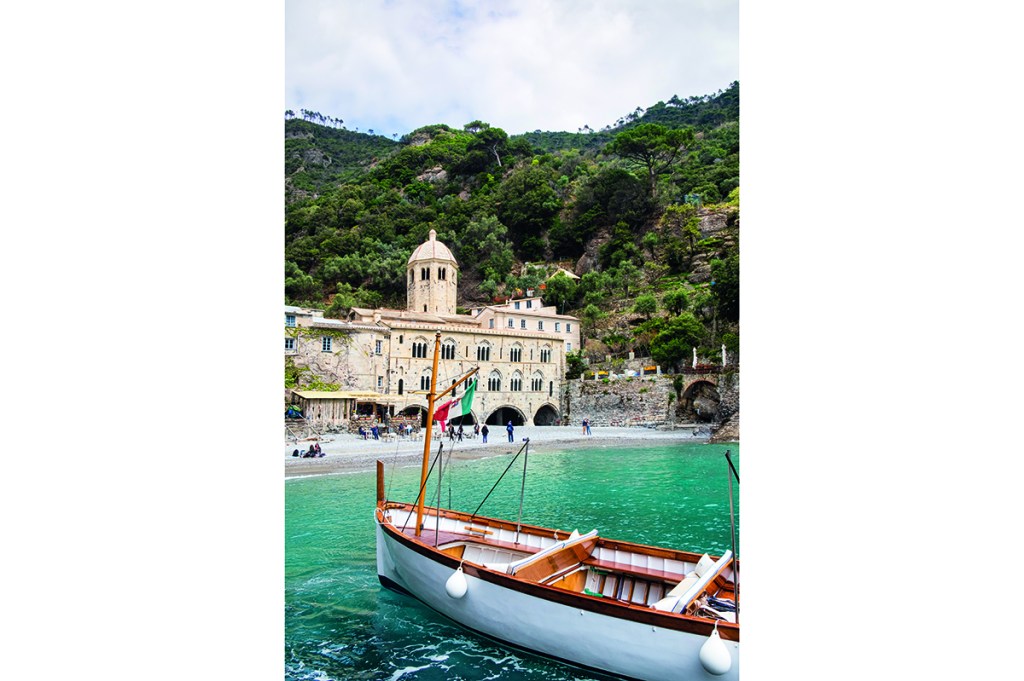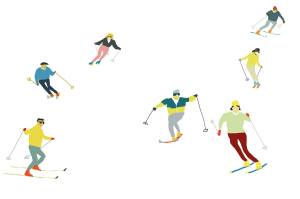Turin at the end of August is pleasingly melancholic. The city has emptied after the feast of Ferragosto on August 15 and won’t fill up again till September. Solid bourgeois streets, with eighteenth- and nineteenth-century buildings now housing banks, are deserted save for the occasional confused tourist. What brings others to Turin in August I cannot say. For me, it was a wedding in Milan at the end of the week and the prospect of a little vacation ahead of it.
Turin was a whim. I was meant to meet a college friend in Genoa on Monday, but my Sunday-night redeye from New York was canceled. Saturday was the only option, and so I was left at a loose end. Options abounded: I could stay overnight in Milan and head to Genoa with my friend the next day. But though it was August, Milan’s hotels were still rather dear. And anyway I’d be back on Thursday. So Milan was out. I could head directly to Genoa, but was there enough to see? I’d have a full day there Monday regardless. A coworker had recommended Turin for its architecture and food, neither of which proved in short supply, as I found out.
Defined by its arcades, over ten miles of them, Turin has an easy elegance that speaks to its role as a major center of Italian industry. Fiat and Lavazza are here — one of whose products you want to buy — and the city retains a commercial air, though a dated one owing to the lack of skyscrapers. Most of the arcades are given over to shops: one particularly enticing neon sign hung at the Piazza San Carlo advertised simply “Martini.” That airy plaza must be mobbed most of the year, but it was quiet on this Sunday afternoon in late August. All the better for me to observe the Piazza C.L.N., a striking example of 1930s Italian modernism. There’s a bit of grim hilarity in learning that the square is now named for the Italian resistance movement, since the architecture is so obviously a prime example of the Italian fascist penchant for design (I thought of babies and bathwater). Worse, it was here that the Gestapo had their headquarters during World War Two. Still, this is undeniably glorious stripped classicism, with regular, angular forms clad in a subtly veined marble. Originally four statues were commissioned at ground level: Mussolini, King Vittorio Emanuele III and personifications of Turin’s dual rivers, the Dora and the Po. In the event, only the latter two were carved, in a deco style reminiscent of the work of Eric Gill.
The Po is a retiring presence in Turin. While you can’t miss the Arno in Florence, you could spend a whole day in Turin and never notice the Po, sitting, as it does, on the eastern edge of the city. But amble down through the Parco del Valentino to the river’s edge for a reward — a series of riparian bars, all positioned to give views of the calm water. At Imbarchino, the lurid-red Campari spritz was doled out in a plastic cup, a suitably casual vessel for a bar that also hosts its own radio station. The patrons seemed to be mostly university students, Turin’s corporate types having fled the city for cooler climes. Throngs gathered on the grass in the park, some on blankets, others risking grass stains, all ready for an open-air sunset party.
Dinner was at Scannabue, recommended to me by that old friend the Michelin Guide, which promisingly touted its “deliberately traditional” style (the phrase might describe this writer, too). Vitello tonnato was the color of a summer rose, thinly sliced, served cold and piled around a generous mound of tuna-infused mayonnaise. It was enough for a complete meal, but I had agnolotti del plin on the way, named for the way the parcels of pasta are pinched. The little packets contained, according to the menu, three different meats, though I never inquired which. I was too enthused by the contrast of the supremely rich filling with the delicate pasta that contained it, all heightened by a beefy broth. Surely it was a mistake to order roast lamb for a main course after the preceding antipasto and primo piatto, but I had vowed to honor the Italian way of dining, which is to say three real courses. Fortified by a half-liter carafe of Nebbiolo for the shockingly low price of €7, I persisted.
The trains in Italy do tend to run on time, but air conditioning can be spotty. For most of the two-hour ride between Turin and Genoa, the countryside rolled by as sweat rolled down my forehead. In Genoa I was met at the station by a friend of a friend, a native, who had promised to show me around the city. He whisked me from palazzo to palazzo, explaining that the Genoese, being a mercantile power, built so many palaces for commercial reasons. The government cleverly outsourced diplomatic hospitality to the leading families, who could expect to benefit financially from their hosting. Genoa is not short on baroque churches, either, though I missed their decorated ceilings as my host explained that “in Genoa, even the churches close for the August break. Perhaps especially the churches.” So hilly is Genoa that in addition to funiculars, the city operates public elevators to take residents from one level of town to another.
A short train ride that afternoon, strangely filled with multiple yapping Pomeranians, brought me to Camogli, a little fishing village down the Ligurian coast, on the Riviera di Levante — that is, of the rising sun. Traditionally scruffier than the Riviera di Ponente, which runs from Genoa to Nice, the Riviera di Levante is characterized by small hamlets rising quickly to steep scrubland hills. Off the coastline, the landscape is not particularly hospitable.
In Camogli, painted buildings, many with trompe l’oeil architectural detailing on the façades, ring a natural cove with a pebbly beach. An array of bars and restaurants line the coastal promenade, each offering drinks and sunset views. But it’s not just drinks, for Camogli (and the rest of Liguria) are deeply committed to the concept of aperitivo, whereby beverages are accompanied by snacks, in this case focaccia and olives (apparently the two major food groups of the region). After multiple plates of aperitivo, dinner is optional but still observed. It can’t all be aperitivi, though. Looking to work off the previous night’s bottle (or two) of pigato — a local grape — my friend, having arrived the previous day from Milan, and I sought a bit of light hiking. We hit upon a coastal route through the Parco di Portofino, a preserved stretch of forest on the peninsula named for that little town so beloved by the international money-laundering set.
My host in Genoa had said, “It’s an easy hike, very scenic.” Only the latter half of that statement proved true. I asked if I’d need any special shoes, having only brought a near-treadless pair of old sneakers. The answer was no, sneakers would be just fine. Perhaps the standard Italian sneaker is specially outfitted for slippery rocks and sheer drops. Mine were not.
The route out of Camogli starts gently enough. You leave the pastel seashore and climb a series of terraces, with houses built improbably into the side of the hill. The little hamlet of San Rocco consists of merely a few bars and cafés, a panificio and a church. At San Rocco the hiker has a choice: the gentle path through the forest or the coastal route, yielding better views but rather a sterner test. How stern became apparent when we spotted the first set of chains attached to the slippery rock face. The chains, we gathered, were to be clutched to aid in crossing the rocks. They were necessary; a wrong move would result in a sheer drop of thousands of feet. Along the way, you glimpse a little spit of land called Punta Chiappa, which allegedly inspired a stanza by Byron in Childe Harold:
There is a pleasure in the pathless woods,
There is a rapture on the lonely shore,
There is society where none intrudes,
By the deep Sea, and music in its roar:
I love not Man the less, but Nature more,
From these our interviews, in which I steal
From all I may be, or have been before,
To mingle with the Universe, and feel
What I can ne’er express, yet cannot all conceal.
After three and a half hours of strenuous trekking and considerations of mortality every time we approached a set of chains, we didn’t love Nature more. But we did reach the Abbey of San Fruttuoso, built starting in the tenth century and now abutting an improbably alluring miniature cove and beach, fronting water so baby blue as to almost look fake. The sunbeds having been pre-reserved, we were left to buy a €30 towel and plop down on the spiaggia libera. When it came time to leave, we thought of the chains — and decided to take the boat back.
This article was originally published in The Spectator’s November 2022 World edition.


















